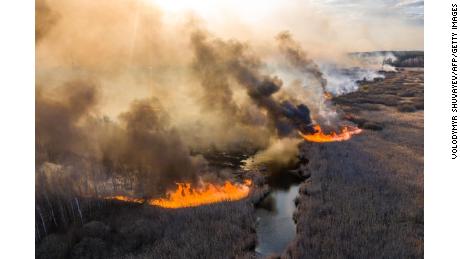(Level: B1 to B2 / Intermediate / **)
 |
| Photo credit: cnn.com |
Before watching:
You are going to watch a BBC report focusing on a fire which had been raging until recently in large parts of the forest inside the Chernobyl exclusion zone in Ukraine... A fact most people tended to ignore because of the coronavirus crisis...
Fortunately, it didn't reach the power plant. Yet, the conservation zone, which is home to rare animal and plant species, has been partially destroyed.
 |
| Map credit: bbc.co.uk |
the nuclear fallout: particles resulting from a nuclear explosion and descending onto the earth retombées radioactives
the red data book: a list of endangered species livre rouge des espèces menacées
ungulates: mammals with hooves (enlarged toenails) ongulés
 |
| a moose Picture credit: ukrinform.fr |
 |
| a roe deer Picture credit: en.wikipedia.org |
 |
| A Przewalski horse Picture credit: fr.wikipedia.org |
While watching:
Answer the following questions:
1. What makes the exclusion zone in Ukraine a unique area?
2. What impact will the fire have had on the area?
You can also watch the report on the BBC site by clicking HERE
When you are finished, you can check your answers:
1.
La zone d'exclusion autour de la centrale de Tchernobyl, désertée par l'homme depuis plus de 30 ans, est devenue un lieu où la nature a repris pleinement ses droits, avec une faune et une flore abondante. On y trouve, entre autres, toutes sortes de grands mammifères ongulés (dont des espèces rares) comme des chevaux de Przewalski, des élans, des chevreuils...
2.
L'incendie aura un impact néfaste dans la région:
- moins de sources alimentaires pour la faune, pour les grands mammifères;
- des plantes rares auront disparu...
- on ignore en quoi les nouvelles pousses pourraient être différentes;
- la forêt détruite va mettre dix ans pour se régénérer.
- ...
No comments:
Post a Comment